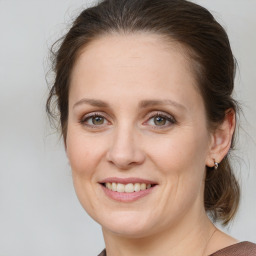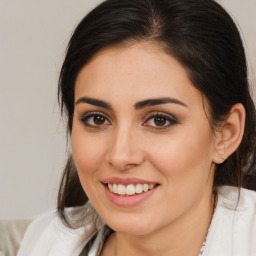This sample report will let us know about:
- Introduction on Oncology
- Elaborating about Literature Review.
- Factors Contributing to Cancer
Chapter1 : Introduction
What is oncology?
Oncology is a field of science focused on cancers and tumors. The term "oncology" comes from the Greek words "onco," meaning bulk or tumor, and "logy," meaning study (Fourie and Veldsman, 2007). It involves the diagnosis and medical treatment of cancer, aiming to manage the disease during and after a patient's hospital stay. Medical professionals in this field are known as oncologists or cancer specialists (Cidon et al., 2012).
Oncologists have various responsibilities. They assist in diagnosing cancer, determining its stage and aggressiveness, and providing ongoing guidance throughout the illness. Their role also includes follow-up investigations, palliative care, evaluating disease progression, preventing complications, and offering survival advice (Pandey et al., 2011). Treatment methods they employ include surgery, chemotherapy, hormonal therapy, and other medications.Oncologists may further be divided on basis of type of treatment as well as the role played by them.
- Radiation oncologist - Here the oncologists treat the patients with radiation via a process known as radiotherapy.
- Surgical oncologist - According to Casciato and Territo, 2012, “the oncologists play the role of surgeons and specialize in removal of tumor†(Casciato and Territo, 2012).
- Medical oncologist - These oncologists are involved in treatment with drugs (Othman and et.al. 2011).
- Interventional oncologist - As per Chang and et.al., 2007, “they are interventional radiologists whose major specialty is in usage of an image guided tumor therapies which are minimally invasive in nature†(Chang and et.al., 2007).
- Gynecologic oncologist - These oncologists focus on cancers that are found in female reproductive system.
- Pediatric oncologist - The oncologists of this field are concerned with the diagnosis as well treatment of child cancers (Thomas and Davies, 2007).
The Kurdistan Region of Iraq: geographic and demographic views
Kurdistan also known as Kurdistan region or Iraqi Kurdistan is considered as an autonomous region of northern Iraq. It is bordered by Iran in east, Turkey in the north, Syria along west region and rest of Iraq across the south. The regional capital of Kurdistan is Arbil. In Kurdish language it is also known as Hewler (Kurdistan Region, 2013). This region is officially under the governance of Kurdistan Regional Government. The major cities of Kurdistan happen to be Erbil, Suleimaniah, and Duhok. Majority of the people have been found to speak Kurdish language. Some of the people also use Arabic as an official language.
Chapter 2 - Literature Review
What is cancer?
Cancer is a class of disease that is featured by out of control growth of cells which may occur anywhere in the body. As per Abraham, 2012 “Cancer begins in cells which are regarded as building blocks of body. Normally, the body forms new cells as per need by replacing there old ones. Sometimes this process goes wrong†(Abraham, 2012, 203). It happens as new cells start growing even when not needed by body and old cells do not die as they should. This results in formulation of an extra cell mass known as tumor. These tumors grow and interfere with the digestive, circulatory as well as nervous system. The tumors are further classified as benign and malignant (Silva and Zurrida, 2005).
- Benign tumors - Benign tumors are the ones that grow very large and press the healthy organs as well as tissues. Although, they are not found to invade other organs and neither do they spread via blood or lymphatic channels. These tumors are even not considered as life threatening (Pardee, 2011).
- Malignant tumors - Malignant tumors bear a significant amount of difference than benign tumors (Mandal, 2013). They tend to grow faster and are more invasive than benign tumors. These have a capability of spreading to other organs by a process of invasion and metastasis.
Path physiology of cancer
The human body has got a vast cell network which is trillion in number. These cells have a tightly regulated cell cycle which controls the growth, maturity, division as well as death phase. During the childhood years, normal cells divide in a faster manner so as to aid in the process of growth (Lewis, White and Dorris, 2005). Once adulthood is reached, the cells divide and replace worn out cells so as to repair injuries. This cell growth is controlled by cellular blue print regarded as DNA. Various models have been given to explain the whole process of cancer.
Cancer is said to occur when cells in a part of body start growing out of control. Hence, it can be said that all types of cancer irrespective of their origin occur on account of disturbed cell growth (Sarkar, 2009). This leads to tumor and lesion formation. Moreover, the cancer cells also have rogue like properties. These are as follows;
- They have a longer life span. These cells instead of dying continue to grow and form new as well as abnormal cells.
- As per Somunoglu and Tatar, 2012, “the cancer cells are also found to invade other tissues. This property is known as metastasis and is not found in the normal cells†(Somunoglu and Tatar, 2012).
- Cancer cells also grow into tumors that are supplied by a rich network of blood vessels. This process is known as angiogenesis. It is considered to be a unique process by which there is regular maintenance of blood and nutrient supply to cancer cells.
Factors Contributing to Cancer
Cancer is caused by a combination of external and internal factors. The external factors are inclusive of tobacco, chemicals, exposure to radiation as well as infectious organisms (Fawcett and McQueen, 2010). Azim and et.al., 2010 has pointed out several internal factors in form of inherited mutations from parents, hormones and immune condition as well as alterations that occur from metabolism. These casual factors may act together or in a sequence so as to initiate or promote the process of carcinogenesis (Azim and et.al., 2010). As per the reports released by National Cancer Institute, eighty percent of the cancers are due to factors that have been identified and can be controlled potentially (Ruddon, 2007).
- Growing older - The most important risk factor associated with many forms of the cancer is the old age. A good number of cancers are found to occur in people who are over 65 years of age. However, children are also prone to cancer.
- Tobacco - Tobacco usage is regarded as most common risk factor for lung and mouth cancer. As per the estimates it has been found that 1, 80,000 Americans die from cancer that is related to the usage of tobacco (Silva and Zurrida, 2005). Using tobacco products as well as its smoke increases the risk of cancer. Smokers are more likely to develop cancer of lung, larynx, mouth, esophagus, urinary bladder and kidney. They also have a high risk of developing acute myeloid leukemia.
- Sunlight - Beiki and et.al., 2012 considers “exposure to ultraviolet (UV) radiation is also a major reason behind development of cancer. It is found to cause early ageing of skin as well as damage thereby leading to cancer†(Beiki and et.al., 2012). The radiations are found to come from sunlight, sunlamps, tanning booths as well as laboratory experiments.
- Ionizing radiation - This kind of radiation can cause cell damage thereby resulting in cancer. It comes from the rays that enter the earth's atmosphere, radon gas as well as x rays. Fallout of radioactive substances coming from leakage at nuclear power plants, production and use of atomic weapons as well as testing also causes cancer. According to Taghian and Halyard, 2012, “if people get exposed to such radiations then they are most likely to develop cancer of breast, lungs, stomach and thyroid†(Taghian and Halyard, 2012). Radon gas is basically found in soil and rocks. Hence, people who work in mines may be exposed to radon. This exposure to the radioactive gas increases chances of lung cancer (Stephens and Aigner, 2009). Radiation exposure is also caused during medical procedures like low-dose x-rays as well as high-dose radiation from large machines
- Certain Chemicals and Other Substances - People with certain jobs like painters, construction workers and those that are employed in chemical industry are exposed to many kinds of toxic substances. These are asbestos, nickel, vinyl chloride, cadmium among others (Eadie and MacAskill, 2008).
- Viruses and bacteria - Infections caused by certain viruses and bacteria may lead to an increased risk of developing cancer. For example, Human papillomaviruses is the main causative agent of cervical cancer. Many years of infection with hepatitis B or hepatitis C can lead to development of liver cancer. Human T-cell leukemia/lymphoma virus can increase the risk of person towards lymphoma and leukemia (Ahmad and et.al., 2010). Human immunodeficiency virus (HIV) is regarded as the causative agent of AIDS. The individuals with Human immunodeficiency virus infection also have a higher chance of developing lymphoma and Kaposi sarcoma.
- Certain kinds of hormone - Doctors may recommend certain hormonal therapies such as estrogen or estrogen along with progestin to control problems like hot flashes, dryness of vagina, and thinning bones during the time of menopause. However, Boltz, Capezuti and Shabbat, 2010 says, “this hormone therapy has many side effects. These may increase the risk of breast cancer, heart attack, stroke or clotting of blood. Diethylstilbestrol (DES), a form of estrogen if given during the time of pregnancy may increase the risk of breast cancer in women and cause a rare form of cervical cancer in daughters'' (Boltz, Capezuti and Shabbat, 2010).
- Alcohol - There is an increased chance of developing mouth, liver, larynx and breast cancer if a person consumes more than two drinks on a daily basis for many years. This risk is higher for a drinker that also uses tobacco (Barthelmes and et.al., 2005).
- Poor Diet, Physical Activity or Overweight - As per the studies released by National Cancer Institute, obesity is regarded as one of the major risk factors towards cancer. These may be related to pancreatic cancer and breast cancer or even cancer of gastrointestinal tract (Grush, 2013). People with a poor dietary regime, lack of physical activity or being overweight increase the risk of cancers. For example, the individuals whose diet has an increased amount of fat have more risk towards development of cancer related to prostrate, colon and uterus (Fakhimi and Probert, 2013). Lack of physical activity and being overweight is also regarded as major risk factor for development of cancer.
Symptoms of cancer
The symptoms associated with cancer are basically of two types. There are the ones that can be seen physically while some symptoms are there that can only be felt. The common signs like cough, cold, fever, unwanted bowel movements that are usually ignored by individuals may point to cancer. The American Cancer Society has utilized a word named CAUTION so as to help in recognition of seven early signs of cancer (Jaber and et.al., 2011).
- Changes in bowel or bladder habits - Presence of blood in stools must not be ignored as it can be symptom of cancer. Other than this, if there is a change in normal bowel activity in terms of getting diarrhea or constipation for no obvious reason. Some people may also get alternative episodes of diarrhea and constipation (Silva and Zurrida, 2005). There may be a feeling of improper emptiness of bowel, pain in tummy or back passage. If the above mentioned symptoms last for duration of more than six weeks then it is required to consult with general physician.
- A sore which is not able to heal - An unheeding sore can be a sign of diabetes but if they do not heal within a usual period of time then they are required to be checked.
- Unusual discharge and bleeding - Moles and freckles do not bleed or drain on a usual basis. But if unusual draining issues are observed by an individual then they must be checked out by a general physician (Taghian and Halyard, 2012).
- Thickness or lumps in the breast - According to Pandey and et.al., 2011, “breast lumps are basically regarded as cysts which are found to happen during the course of menstrual cycleâ€. However, on a sad note they can be a beginning of breast tumor (Pandey and et.al, 2011). Hence, it is advisable to carry out a mammogram so as to find out if there is something other than the fluid.
- Indigestion as well as difficulty in swallowing - As per the doctors and physicians, indigestion can arrive from many things. Very frequent forms of indigestion can be a sign of acid reflux or some other normal conditions (Visram, Roberts and Seebohm, 2012). However, in rare cases it can also be a form of cancer.
Spread of cancer
According to Varricchio, 2004, “when cancer spreads to other body parts then the process is known as metastasis†(Varricchio, 2004). There are two ways by which cancer can spread in the body. Cancer cells break away from where they began and travel via blood as well as lymphatic system.
- Lymphatic system - The cancer may spread from where it began via making an entry into lymph system. It travels through lymph vessels are reaches other parts of body. It further forms a metastatic tumor in other parts of body (Barthelmes and et.al., 2005).
- Blood - Axccording to Daniel, 2012, “the cancer may also spread by making an entry into blood vessels there by forming metastatic tumors in other body parts†the metastatic tumor is same as primary tumor. In this regard, it is required to be clear that if breast cancer spreads to bone, then the cancer cells found in bones are actually breast cancer cells. Hence, the disease is metastatic breast cancer and not bones cancer (Daniel, 2012).
Survival rate in cancer
The survival in cancer population is usually measured as a proportion of cancer patients that are even alive after five years of diagnosis. This is relative to 5 year survival of people in general population who are of the same age and gender. The survival rates in cancer population are affected by a number of factors. These are inclusive of type of cancer that occurred, stages in which cancer has been diagnosed and availability of treatment. For cancers that are affected by screening and treatment like female breast, colorectal and childhood cancers; there are large differences in survival between economically developed and developing nations. For example, the five year survival rate of breast cancer in United States is approximately 84 percent. This is in comparison to 39 percent rate found in Algeria (Spalding and et.al., 2013).
Incidence of cancer
Cancer is a leading cause of death all over the world and accounts for approximately 7.6million deaths in a year. Around 13 percent of all deaths are because of cancer. Amongst all the major types of cancer, lung, stomach, liver, colon and breast cancer leads to most common cancer deaths every year (Jemal and et.al., 2011). As per the researchers, it has been found that about 30 percent of cancer deaths are due to behavioral and dietary risks. These are in terms of high body mass index, low fruit and vegetable intake, absence of physical activity, usage of excessive tobacco as well as alcohol use. Tobacco use as considered as most important risk factor for cancer and has resulted in around 22 percent global cancer deaths as well as 71 percent lung cancer deaths (Reeves, 2007). Cancer causing viral infections in form of HBV/HCV and HPV are responsible for around 20 percent of cancer deaths in low as well as middle income nations. As per the reports released by varied scientists it has been found that deaths on account of cancer are rising continuously on a worldwide level. It has been estimated that there will be approximately 13.1 million deaths in the year 2030 (Johnson, 2013). Deaths due to main types of cancer are as follows;
- Breast cancer - 4 lakh 58 thousand deaths (Cancer, 2013).
- Cervical cancer - 2 lakh 75 thousand deaths.
- Colorectal cancer - 6 lakh 8 thousand deaths.
- Liver cancer - 6 lakh 95 thousand deaths.
- Lung cancer - 1.37 million death
- Stomach cancer - 7 lakh 36 thousand deaths.
What is Breast cancer?
Breast cancer is a type of cancer that develops in the breast cells of body. This type of cancer starts off in the inner lining of milk ducts or lobules that supply the organ with milk. The cancers that originate from the duct are named as ductal carcinomas while the ones originating from lobules are considered as lobular carcinomas. This cancer is found to occur in humans and some other mammals. As per the studies carried out by scientists Silva and Zurrida, 2005, majority of cases have been found to occur in women (Silva and Zurrida, 2005). Although males also have a tendency of developing the same but the percentage is very low.
Breast cancer in Kurdistan Region
Breast cancer is being regarded as a major epidemic for women in Kurdistan. This form of cancer is more aggressive in Kurdistan women and has been found to affect them at younger ages. The reports have also revealed that the disease is more aggressive in Kurdistan Region in comparison to other nations. The women that have been found to affect by breast cancer die within the time span of six months or sometimes a year (KRG health ministry hosts conference on breast cancer, 2007). This s drastically different from other countries where a woman may continue to live with cancer for many years. Usually, the breast cancer is considered to be a leading cause of death among women in the age group of 40 to 55 years. However, it has been found that younger women are also affected by it. There is a presence of many reasons that have led to an increase in breast cancer in the Kurdistan women.
- lack of health awareness
- financial support
- supplies
- Research
References
Books and Journal articles
- Ahmad, M. M., and et.al. 2010. Nursing care and quality of life among Jordanian patients with cancer. Leadership in Health Services. 23(3). pp.233 - 243
- Ali, S.A., and et.al., 2012. Survival outcomes in pregnancy associated breast cancer: a retrospective case control study. Breast J. 18(2). Pp. 139-144.
- Ayyappan A.P., Kulkarni, S., and Crystal, P., 2010. Pregnancy-associated breast cancer: spectrum of imaging appearances. Br J Radiol. 83(990). Pp.529-534.
- Azim, H.A., and et al., 2010. Breastfeeding in breast cancer survivors: pattern, behaviour and effect on breast cancer outcome. Breast. 19(6). Pp. 527-531.
- Banning, M., 2012. Advanced breast cancer: aetiology, treatment and psychosocial features. British Journal of Nursing. 16(2). pp 86 - 90.






















